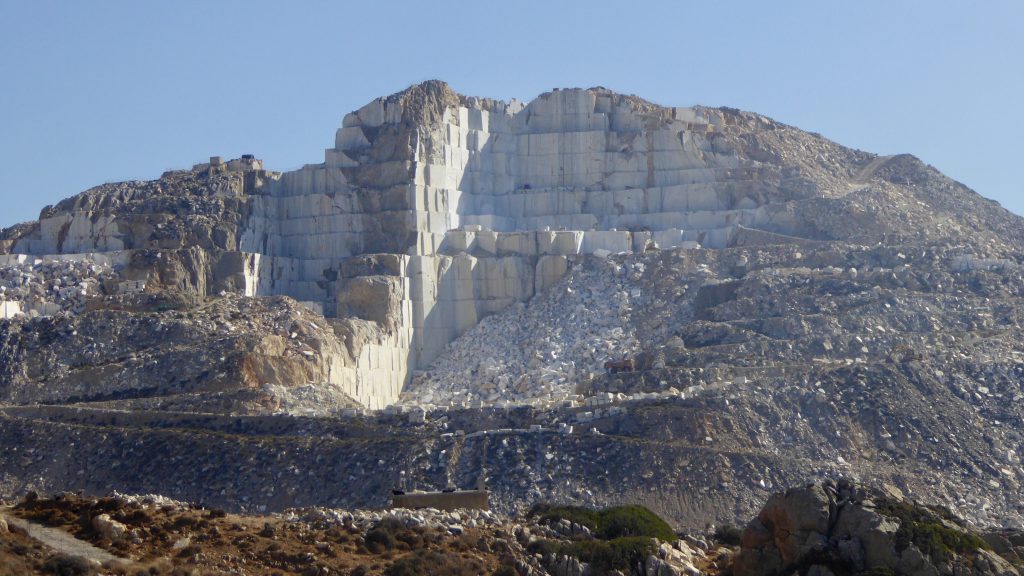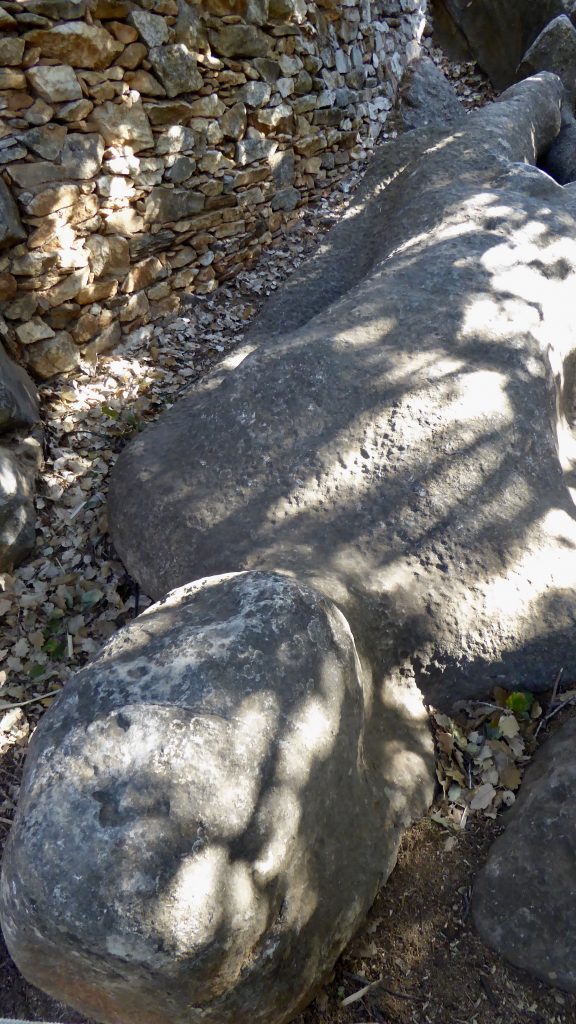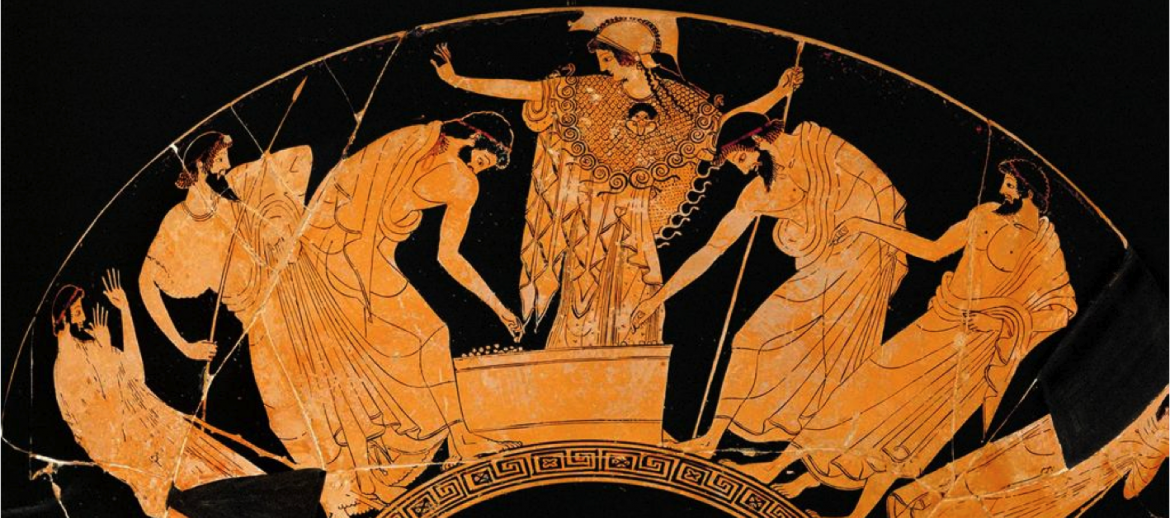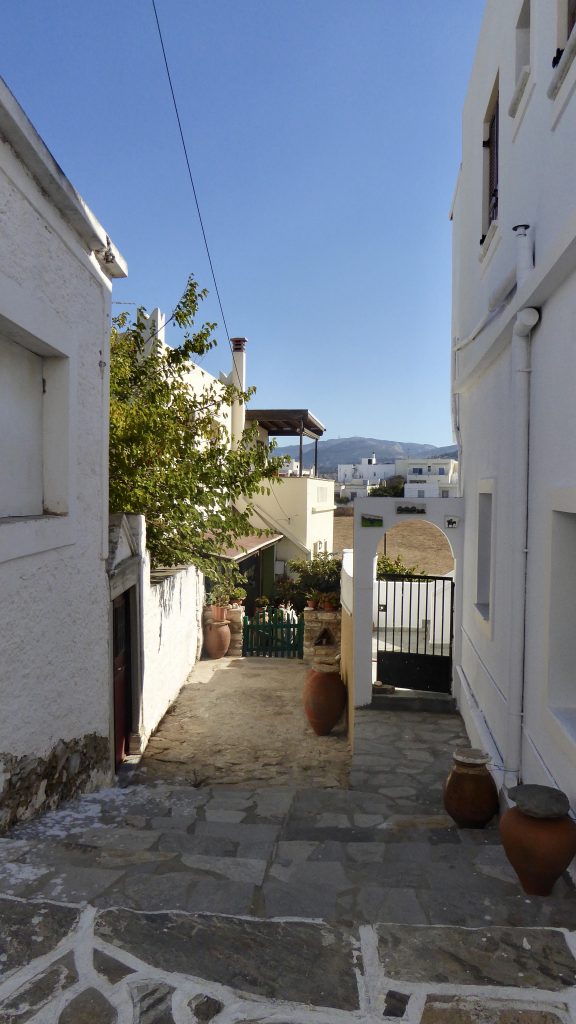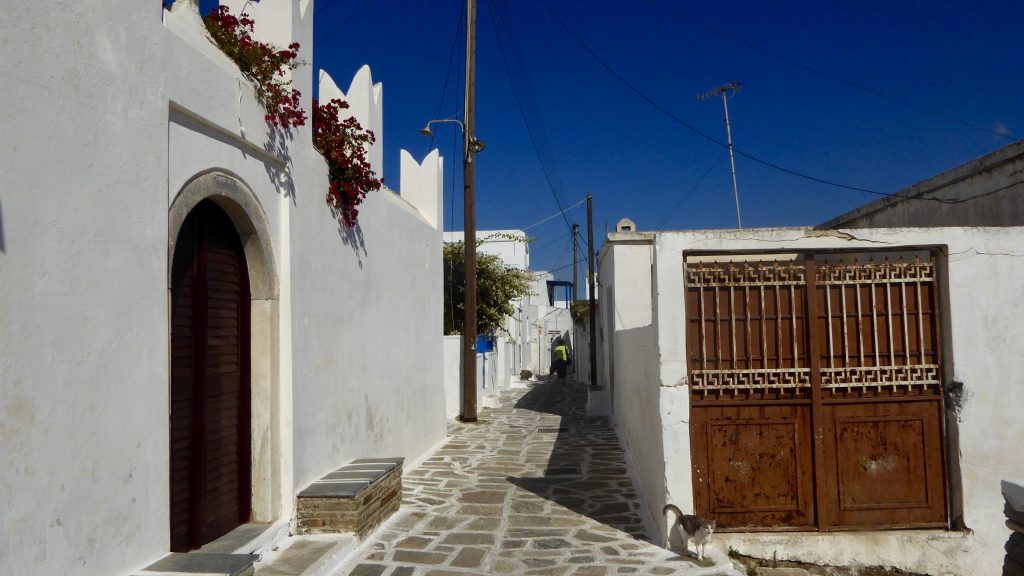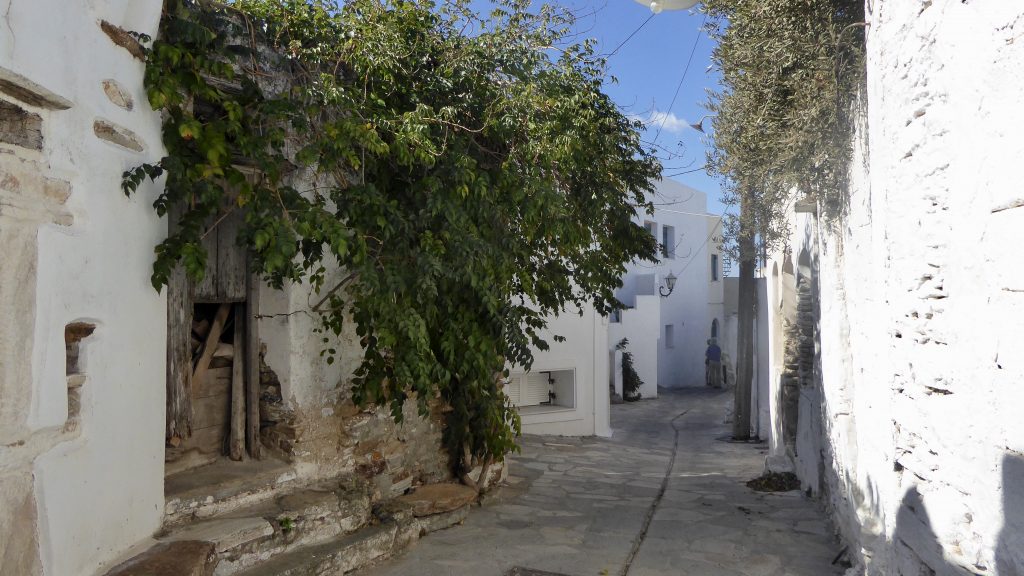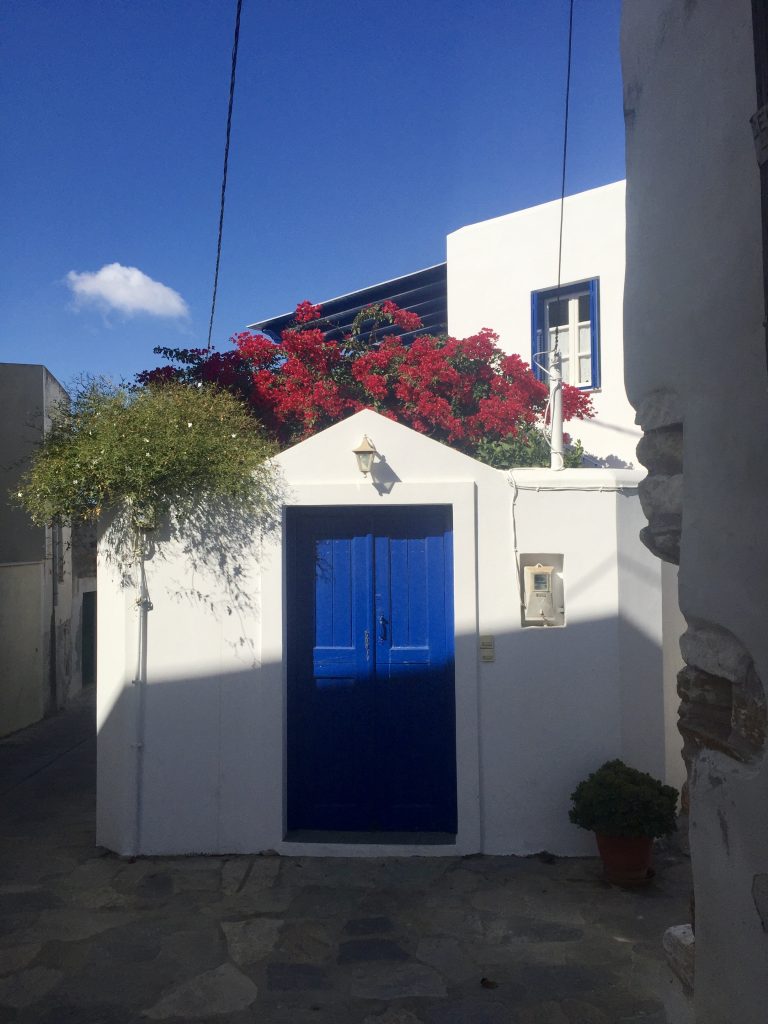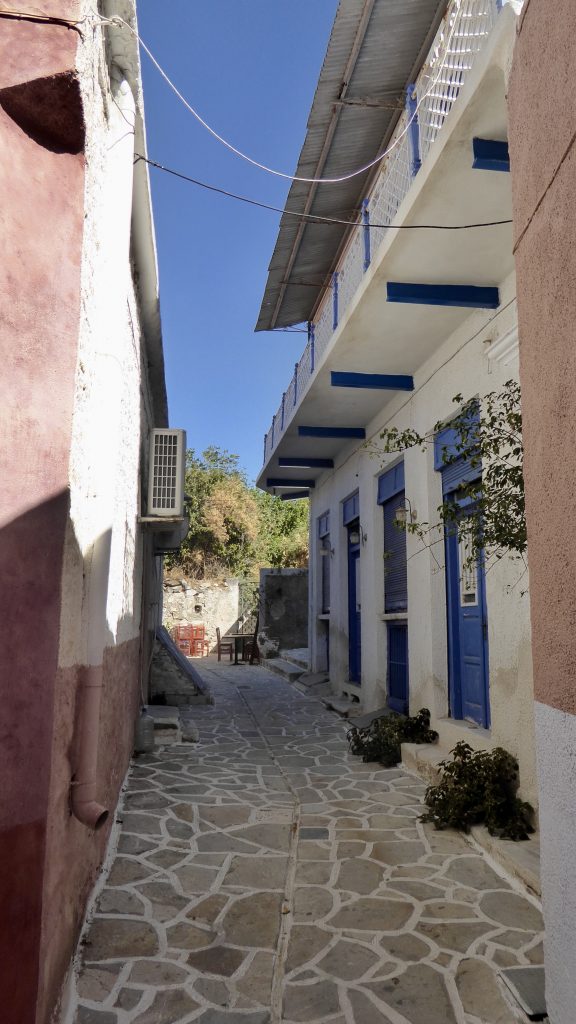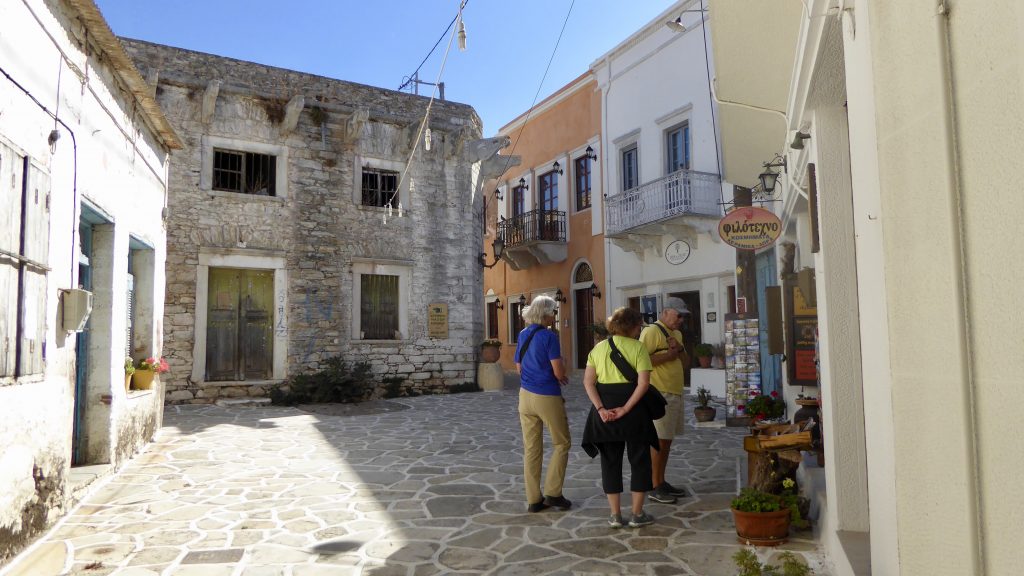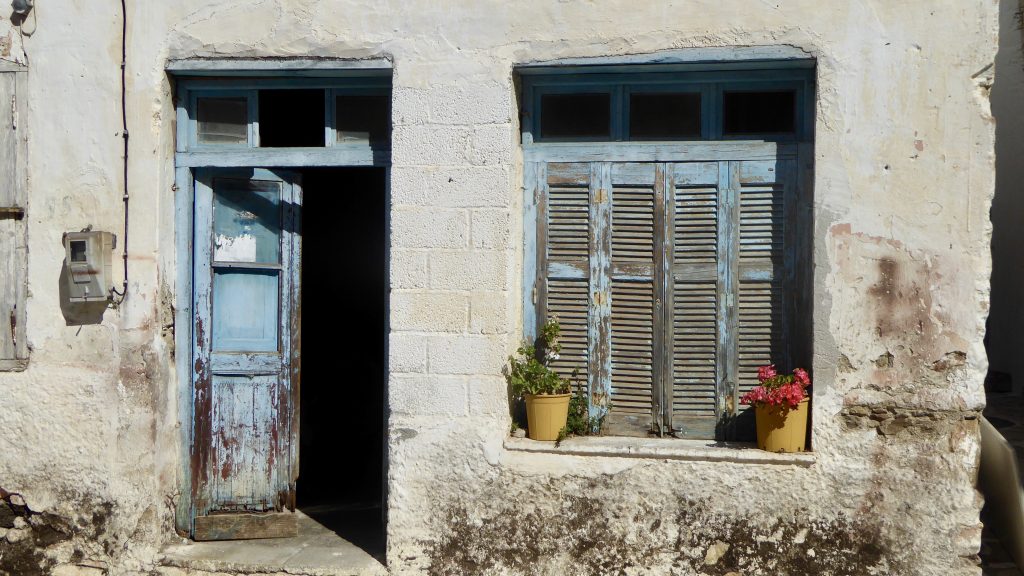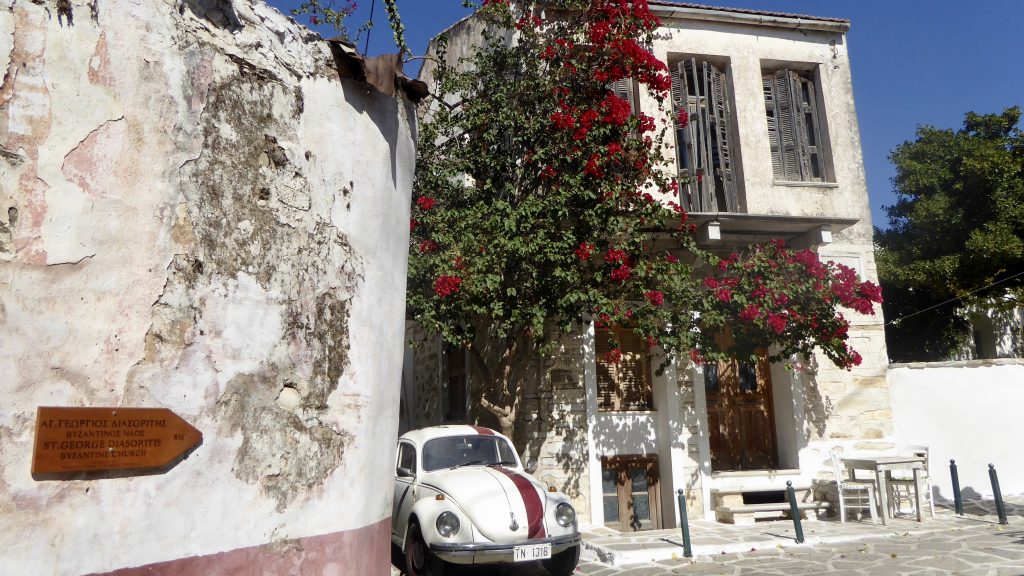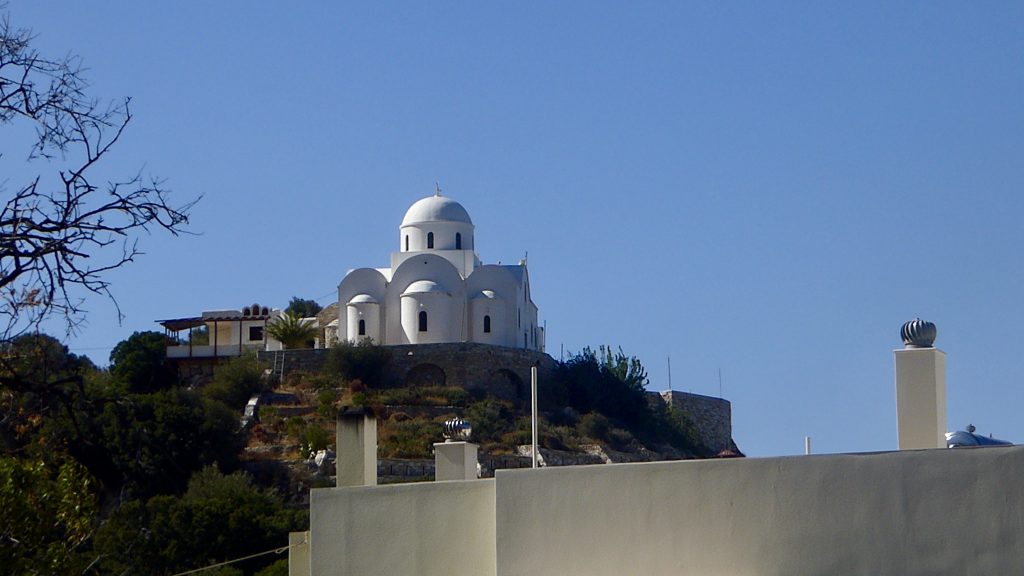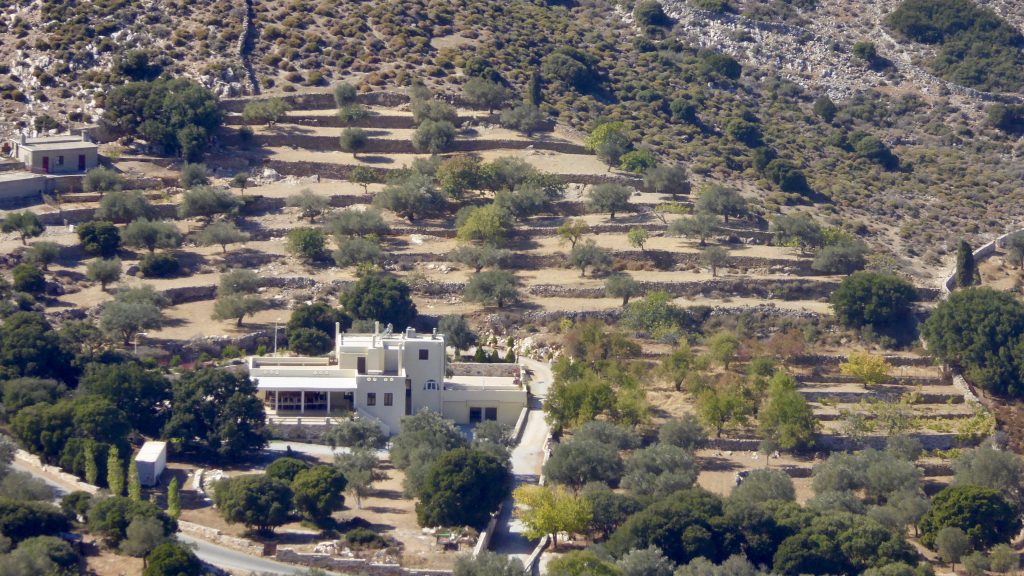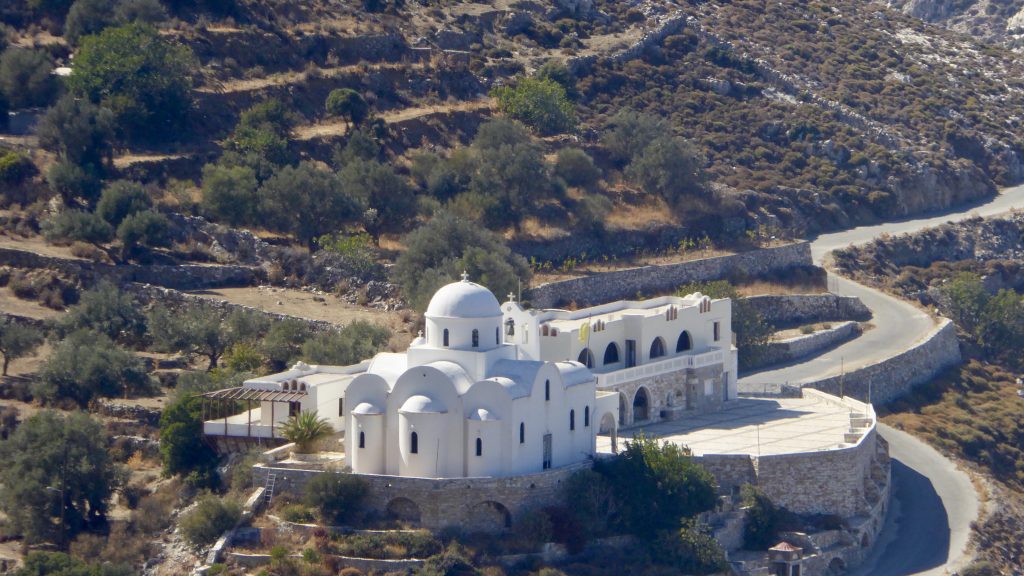Naxos is the largest of the Cyclades islands (and is also home to the highest point in the islands) and it has a long history of agriculture, particularly potatoes, olives, citron, and grapes. There are several dozen towns and villages from the coasts to the mountains and each seems more charming and picturesque than the last. While most places seem to welcome tourists, the island is clearly Greek first. On Santorini, street signs and building names were English first subtitled in Greek. Here on Naxos, English appears as a subtitle if it appears at all. Even so, people are helpful and hospitable and most are at least conversant in English and other languages. I wish I could say that about most Americans.
We spent a pleasant day driving around Naxos exploring everything we could in the time that we had. Here’s the evidence.
Ano Sagri
Ano Sagri is a small mountain town and was our first stop on the journey. It’s charm is it’s simplicity—no big shops, no tourist stops, no chintzy souvenirs, just a well-kept town surrounded by olive and grape orchards.
Halki (Chalki)
Halki is in the geographic center of the island of Naxos. It’s historically significant as a producer of citron (which is still produced here) and is among the most picturesque sites we’ve seen thus far. The Old Square features a number of high end art galleries but also a variety of small workshops and stores selling locally produced clothing, weaving, honey, olive oil, and of course citron. There is an old Byzantine church here which we visited but were not able to enter as it was padlocked for unknown reasons and an extensive trail system that weaves in and out of the Old Square through olive and grape orchards.
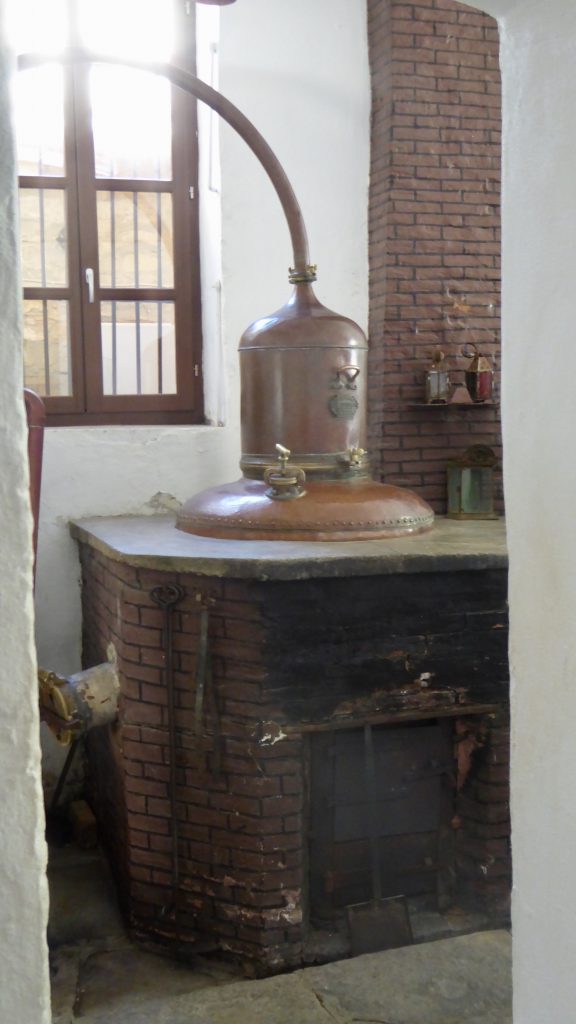
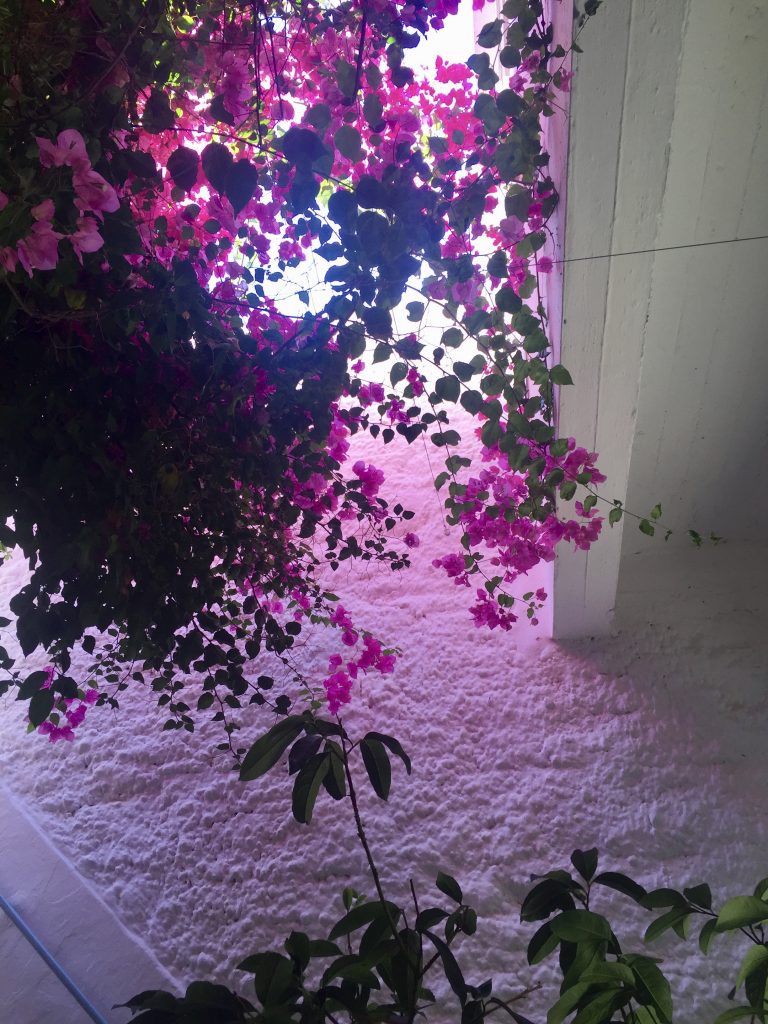
Filoti
Another beautiful town higher up in the mountains. We didn’t stop to explore the town, but we did stop above it to take some photos of the scenery, including the extensively terraced olive and grape orchards. To wit:
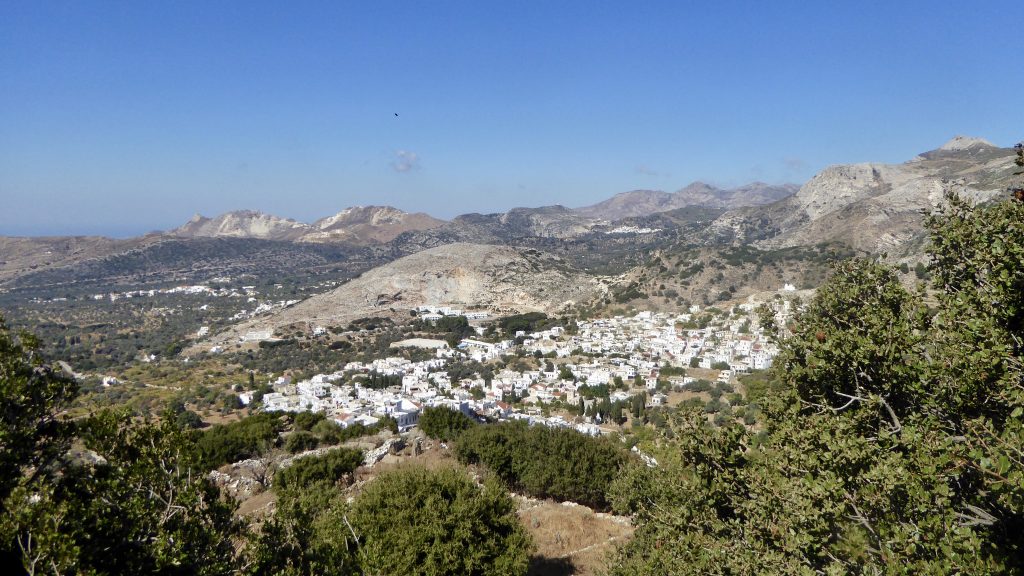
Moni
Another mountain town that we explored by car but not by foot. We did take a few photos, though.
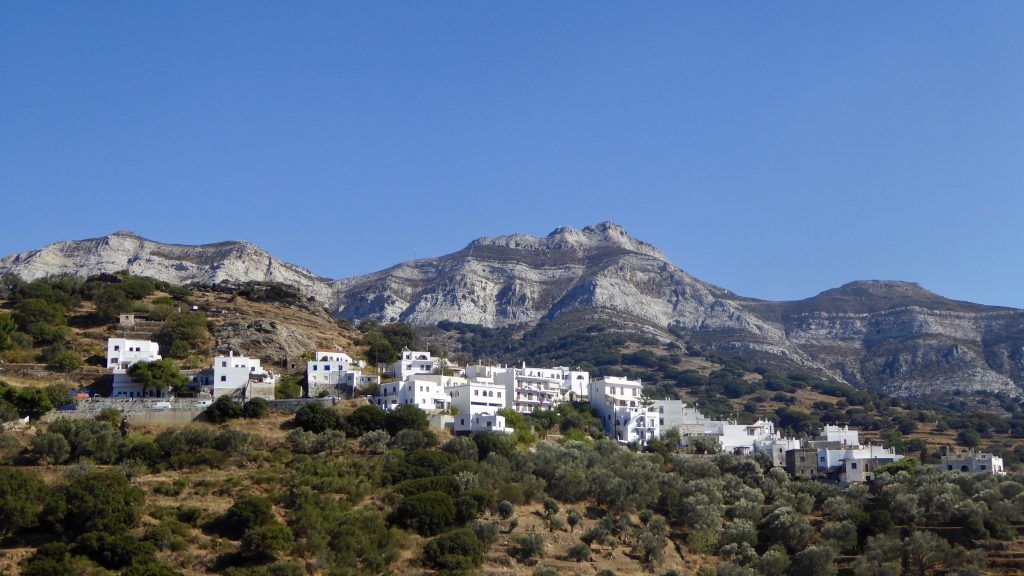
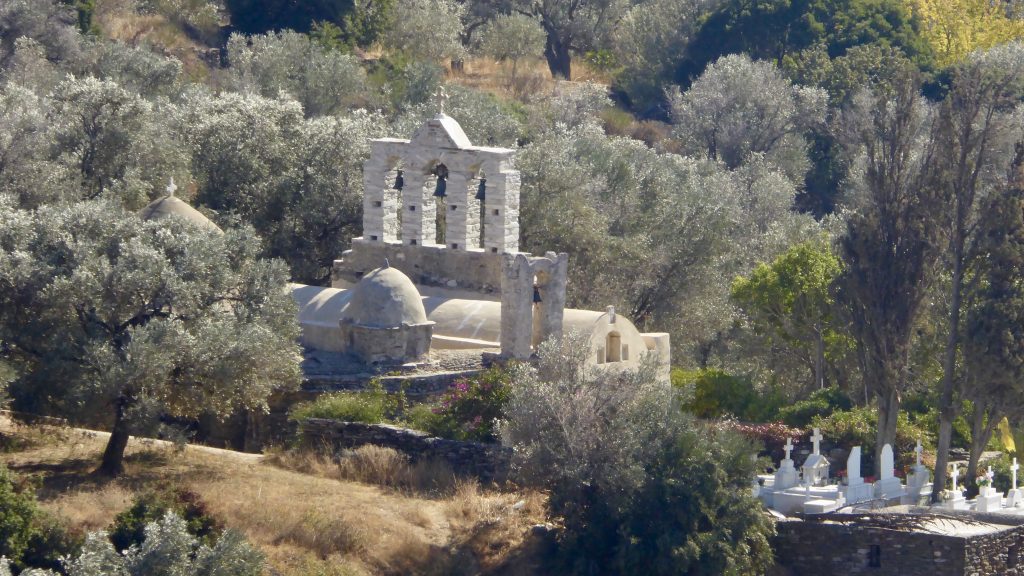
Flerio
The area around Flerio is known, historically and presently, as a source for marble. Marble from Naxos was exported all over the Aegean and wider known world. One of the three known kouros (partially finished statuary left in place for one reason or another) is easily asseccible near a working quarry near Flerio.
